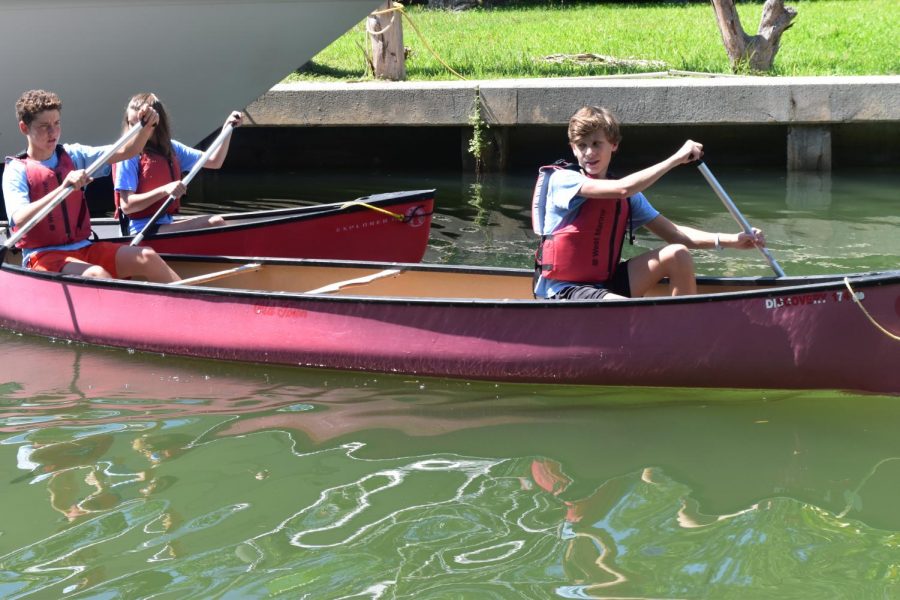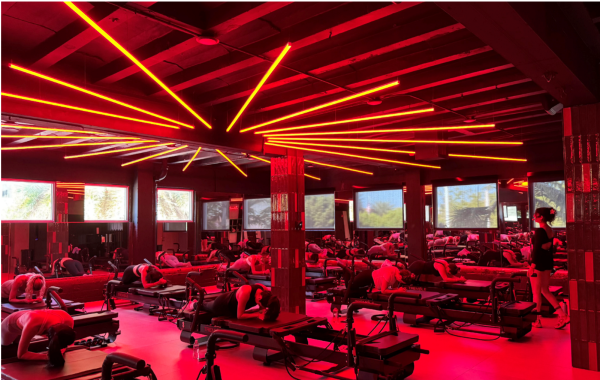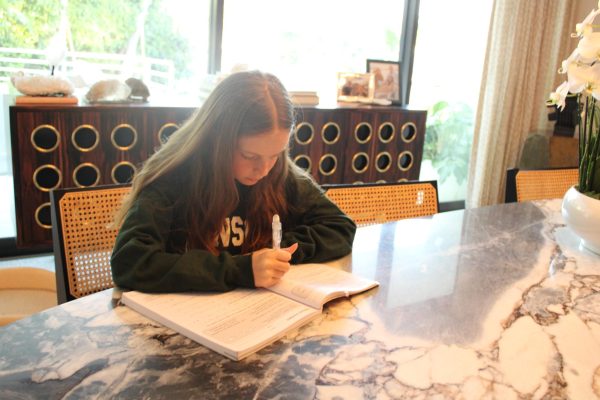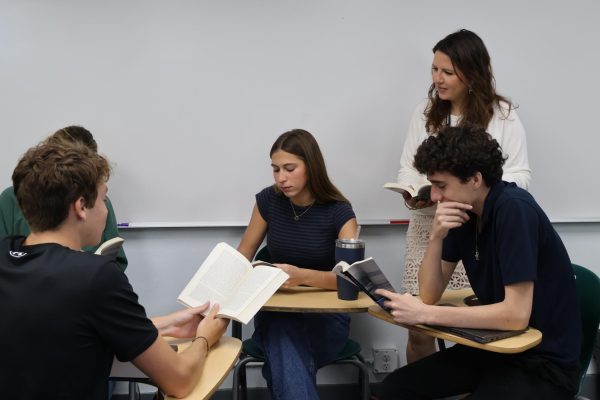Beyond the Classroom
Teachers and students look to the outdoors for new ways to utilize RE’s unique bayside setting
Bay Studies students head out into open waters.
“It adds a new level to what we are learning; it goes beyond looking at a diagram and what your teacher is telling you in class,” said Elanah Arnold ’21, when asked about RE’s focus on outdoor education. From the freshman class’s Outward Bound trip and Bay Studies program to the seniors’ retreat to the Circle F Dude Ranch, outdoor education plays an integral role in the RE curriculum.
As the school looks ahead to the future, however, students and teachers alike are asking: are we using the abundance of outdoor resources to the fullest potential? Where do we go from here?
Although freshmen have been known to be apprehensive about Outward Bound, a five-day journey in the Everglades that they undertake in January, sophomores are often enthusiastic about the lessons they learned and the experience they had.
When asked about her experience on Outward Bound, Helaina Harris ’21 said, “Working together with my team to get through tough moments taught me I am stronger than I thought.”
Ms. Karen Thompson, Dean of the Freshman Class, is in charge of Outward Bound at RE and ensures that every year it proceeds smoothly. In fact, before the Bay Studies and sailing courses existed at RE, she arranged her schedule in order to allot time to prepare students for the trip. “My son can still name everybody that was in his group. He’s a senior in college,” she said.
The Bay Studies program, founded after Outward Bound, is another aspect of the outdoors that students cherish, allowing them to explore the bay by sailing, canoeing, and paddle boarding. Natasha Gross ’20 expressed her appreciation for Advanced Bay Studies, which allowed her to escape from the everyday stress of her other classes.
Similarly, the Circle F Dude Ranch, a weekend retreat for seniors just before the start of school, encompasses a range of activities from horseback riding, to swimming, to climbing. “Since Circle F was just our grade and us spending time together outside, it really increased my connection to not only my friends, but the outdoors as well,” said Oliver Stern ’19. It allowed me to have a greater appreciation of the outdoors.”
Still, despite RE’s current pride in its location on the bay and its armada of sailboats and canoes, students recognize that there are many more ways to move beyond the classroom. Likewise, teachers are eager to employ the school’s outdoor resources in an effort to curb an excessive use of textbooks and electronics.
When asked about expanding classes to incorporate outdoor components, Olivia Byrd ’20 said, “A large part of outdoor education could be having class outside on the deck, just to be more appreciative of the beauty that surrounds our campus. I would love to have my classes outside occasionally, it would really change the way I see my classes and the school.”
When asked about how a once-per-month use of the bay would impact her class, English teacher Ms. Danielle Ellis said, “Aside from the meditative and restorative benefits of being outdoors, my students could benefit from writing about the world around them. I can already think of creative writing assignments that highlight the beauty of the bay. The possibilities are endless.”
With regard to occasionally teaching outdoors, Ms. Ellis said, “Classes should be held in the quad. Classes should explore the mangroves. . . . In my opinion, outdoor education would help teachers develop interdisciplinary courses that truly captivate the students of Ransom Everglades. It is our duty to enrich the minds of each student of RE and that doesn’t always happen in a classroom setting.”
Ultimately, she finds that “for a school so close to the bay, with such beautiful grounds and vast resources,” at the current moment, RE should be seeking out even more opportunities for outdoor education.
Ms. Penny Matthews, a veteran RE Physical Education teacher, agreed that the school could explore even more outdoor offerings. “I would love to see science and the waterfront merge,” she said, “and do a combined course — to be on the water with an advanced biology class and use your physical talents to move you on the water to do your studying.”
For now, teachers are contemplating how to better use what the campus already offers. But new possibilities for further integrating academic and outdoor curricula might also materialize with the ongoing construction projects.
One of the goals of these projects is to offer a new range of outdoor opportunities. Pat Bosch, one of the architects designing the new STEM building, explained that the building will have “various distinct outdoor learning environments,” including an outdoor classroom, an outdoor lab, and an outdoor study lounge. “Next generation educational facilities understand the imperatives of outdoor flexible and adaptable spaces that can allow for year-round integration of outdoor experiences and nature into everyday classes.”







